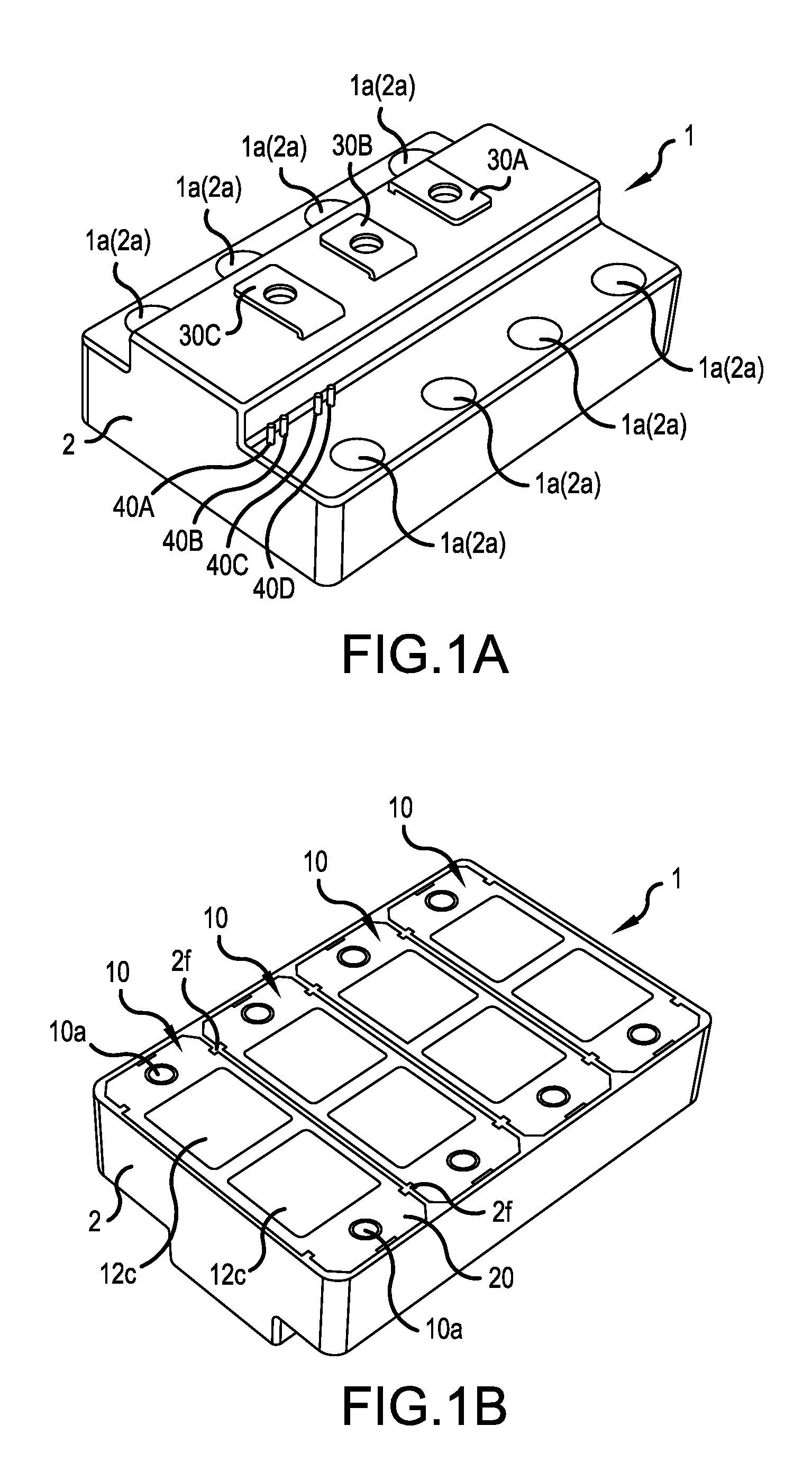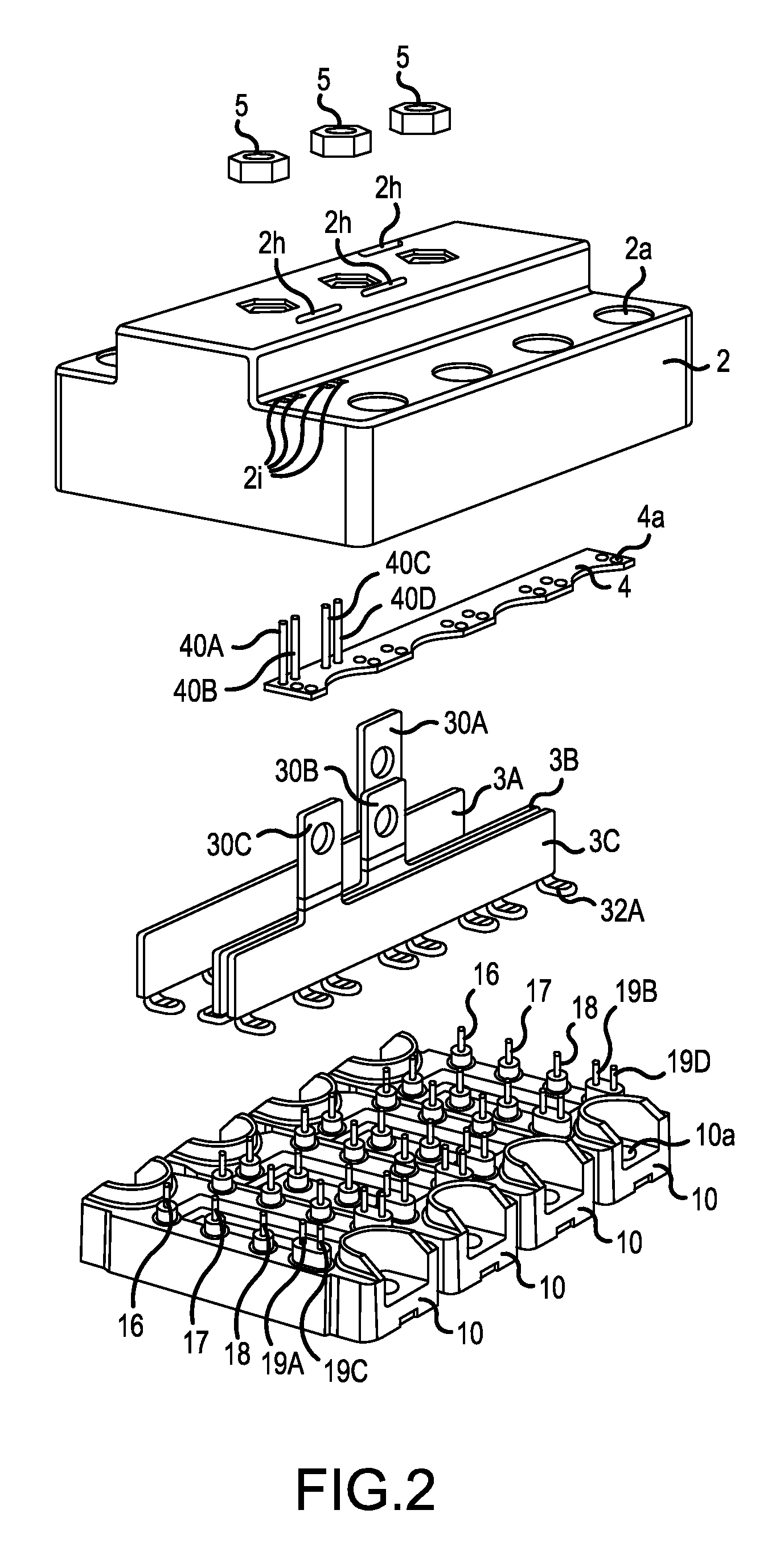Semiconductor device
a technology of semiconductor modules and semiconductor modules, applied in the direction of semiconductor/solid-state device details, electrical apparatus construction details, printed circuit non-printed electric components, etc., can solve the problems of large-capacity power semiconductor modules that cannot be obtained, whole semiconductor modules become defective and have to be discarded, and dedicated packages of large-capacity, in particular, become costly for the manufacturers of semiconductor modules and risky for users. , to achieve the effect of large current carrying capacity
- Summary
- Abstract
- Description
- Claims
- Application Information
AI Technical Summary
Benefits of technology
Problems solved by technology
Method used
Image
Examples
Embodiment Construction
[0042]The following describes details of a semiconductor device according to an embodiment of the present invention with reference to accompanying drawings.
[0043]FIGS. 1A and 1B are perspective views of a semiconductor device 1 according to an embodiment of the invention, in which FIG. 1A is a view of the semiconductor device 1 seen obliquely from above, and FIG. 1B is a view of the semiconductor device 1 seen obliquely from below. As can be seen from FIG. 1B, the semiconductor device 1 comprises a multiple of (four in the example of the figure) power semiconductor modules 10 and a semiconductor module case 2 that covers and fixes the power semiconductor modules 10. As shown in FIG. 1A, the semiconductor device 1 has a configuration of a nearly rectangular parallelepiped with a side view from a shorter side having a projecting part. In the rectangular planar shape of the semiconductor device 1 of the figure, the longitudinal direction of the power semiconductor module 10 is the shor...
PUM
 Login to View More
Login to View More Abstract
Description
Claims
Application Information
 Login to View More
Login to View More - R&D
- Intellectual Property
- Life Sciences
- Materials
- Tech Scout
- Unparalleled Data Quality
- Higher Quality Content
- 60% Fewer Hallucinations
Browse by: Latest US Patents, China's latest patents, Technical Efficacy Thesaurus, Application Domain, Technology Topic, Popular Technical Reports.
© 2025 PatSnap. All rights reserved.Legal|Privacy policy|Modern Slavery Act Transparency Statement|Sitemap|About US| Contact US: help@patsnap.com



